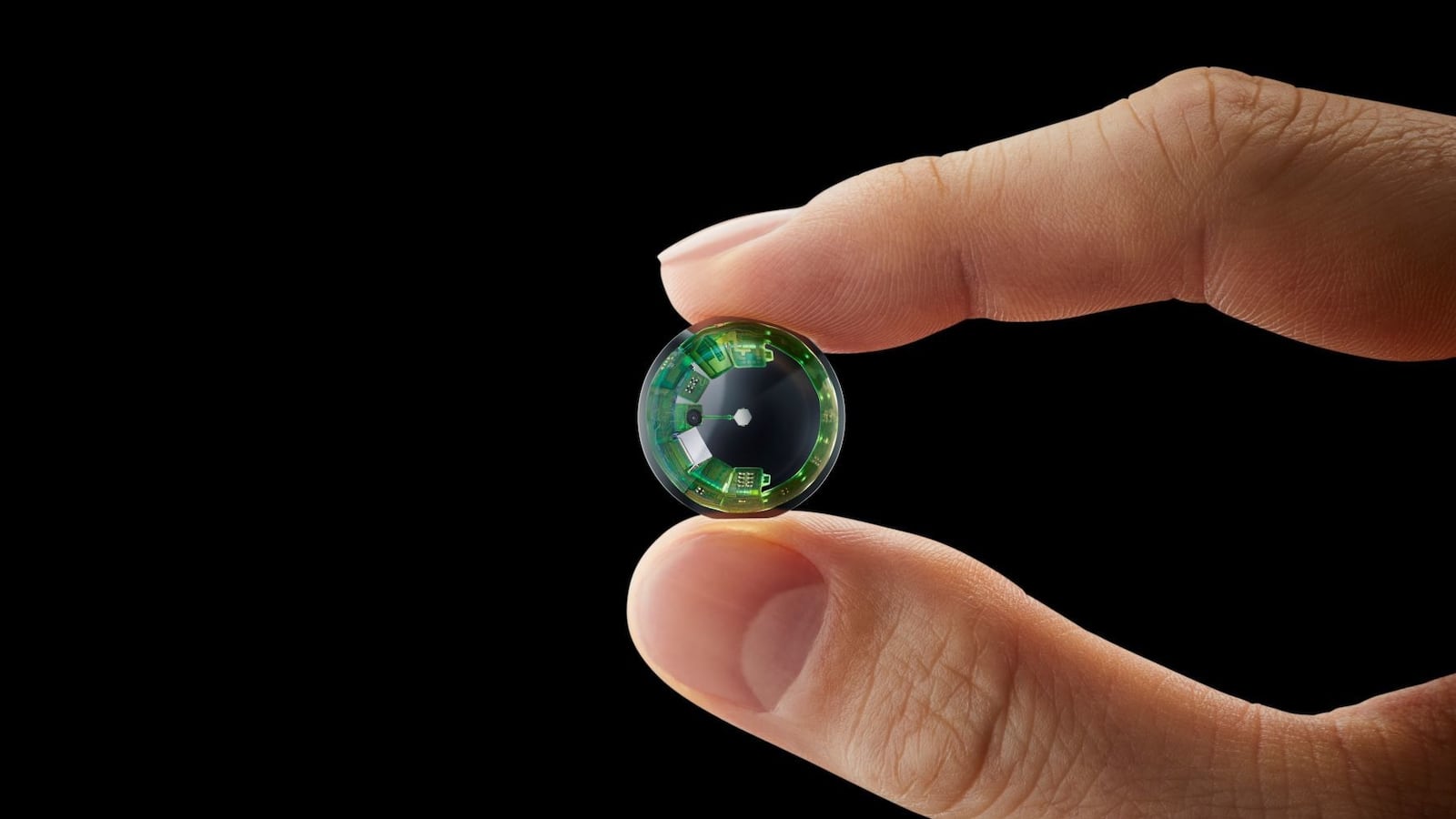In March, a tech startup called Mojo Vision unveiled a look at the future—or rather, through the future. It had invented prototype “smart” contact lenses that, when worn, projected augmented reality (AR) displays over whatever users looked at. Think of it as Google Glass, but it’s experimental and goes directly on your eyeballs. The contacts, dubbed Mojo Lens, promised pristine 3D displays and an eye-tracking system that allows wearers to see handy information like how far you’ve run during a workout, or what hole you’re on during a round of golf.
There was just one critical problem: The prototype lenses still couldn’t be worn. You could only peer through the lenses one at a time, and they couldn’t be placed safely on your eyeballs.
That’s quickly changed now that Mojo has proven they can be worn by human eyes. And company CEO Drew Perkins is the first person to don a pair, Mojo announced on June 28.
“After completing preclinical testing and mitigating potential safety risks, I wore Mojo Lens,” Perkins wrote in a blog post. “Much to my delight, I found I could interact with a compass to find my bearings, view images, and use an on-screen teleprompter to read a surprising but familiar quote.”

CEO Drew Perkins dons a pair of Mojo Lenses successfully testing out the prototype.
Mojo VisionWhile Mojo Lens were unveiled in March, they still required wires in order to function. Now that the lenses are wireless, the company has taken a major step forward in creating a commercially-viable AR wearable. The company has already partnered with the likes of Adidas in order to develop a potential application that’ll allow runners to track their distances, speed, and route. The wearable also has potential to be an extension to your phone or smartwatch too.
“Ultimately, this is a tool that can give people an invisible assistant throughout their day to stay focused without losing access to the information they need to feel confident in any situation,” Perkins wrote.
The Mojo Lens itself uses a rigid gas-permeable contact lens, so it’s not pliable like your typical lens but still breathable. Embedded in it is an array of electronics including a medical-grade battery for power, a microprocessor for computing, and a communications radio so it can connect with other apps and devices. Steve Sinclair, Mojo’s senior vice president of product and marketing, told IEEE Spectrum in March that the current prototype doesn’t include an image sensor, so it won’t be able to take pictures or videos yet. No need to worry about the lenses spying on you unwittingly. (Well, don’t worry too much.)

The Mojo Lens comes with a communications radio, microprocessor, and medical-grade battery.
Mojo VisionWhile promising, it’s worth throwing just a bit of cold water on any hype surrounding AR wearables—let alone AR eye lenses. First, there’s the fact that normal contact lenses can cause a host of health issues like dry eyes and fungal build up already. Add an array of electronics atop a rigid lens, and it could be a recipe for disaster for a lot of people. Potential users might be turned off by the idea of putting a battery on their eyeballs (and for not-unfounded reasons).
There’s also the fact that there might be little practical application and even less demand for this kind of technology. We all remember the debacle that was Google Glass, which saw a lot of hype that went off like a resounding fart in the wind as not many wanted to shell out $1,500 for a potential security and privacy hazard that also made you look dorky as hell. Why should we expect anything different from a pair of AR contact lenses?
Then again, if the hype surrounding the metaverse is to be believed, AR wearables are really only a matter of time. For now, though, the company is going to use the newly developed prototype with the goal of “submission to the FDA for market approval,” according to Perkins. This process will include a number of clinical trials, so don’t expect to be able to pick up a pair anytime soon.





